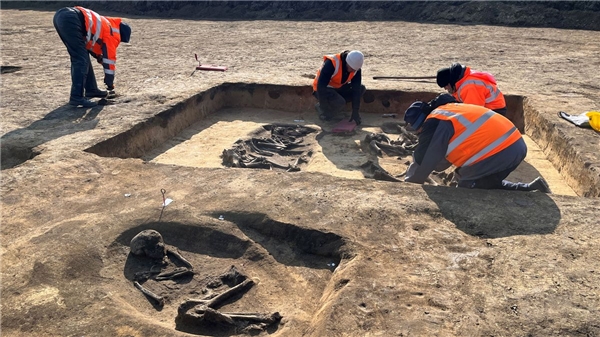
Archaeologists discovered two prehistoric burial mounds in the area where Intel plans to build a billion-dollar chip factory in Magdeburg, Germany. During the examinations carried out in the region, two large wooden burial chambers dating back approximately 6 thousand years were found.
Interesting Remains Found in Burial Chambers

Archaeologists came across multiple human and interesting animal remains in the discovered burial chambers. These rooms are described as large wooden structures and are approximately 20 and 30 meters long. The tombs were built 200 meters apart, near the proposed Intel facility in Magdeburg.
History and Origin of Tombs
Burial chambers, B.C. It is thought to have been built by the Baalberg people, who dominated Central Germany and Bohemia between 4100 and 3600 BC. Research has revealed that a corridor for ritual processions was created between these burial mounds during the Globular Amphora Culture (3300 – 2800 BC).
An Interesting Grave from the Neolithic Period Was Discovered
Archaeologists think they have found a “chariot tomb” type Neolithic tomb depicting an animal-drawn chariot and driver in front of a human skeleton. It is stated that the human remains belong to a man aged 35-40, and the animals were 2-3 years old at the time they were killed.
The Future of Construction and Its Impact on Cultural Heritage
Research and excavations began last year and are scheduled to be completed this April. It is currently unclear whether Intel's factory construction in Magdeburg will be delayed due to archaeological discoveries. This highlights the interaction between technology and history and the impact of industrial development on cultural heritage.




